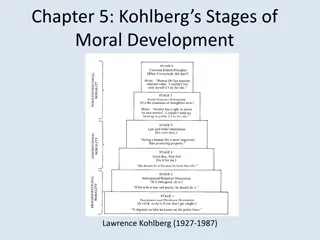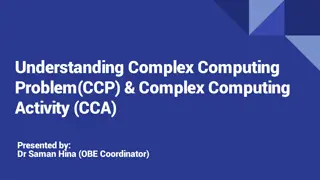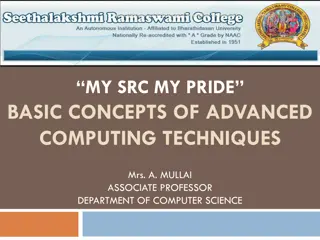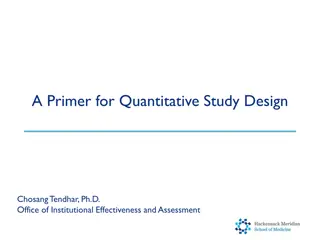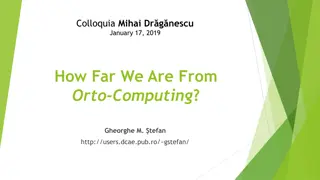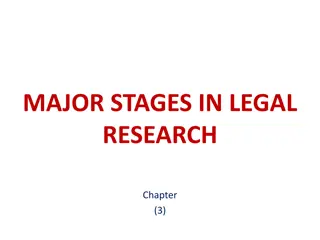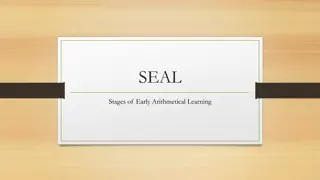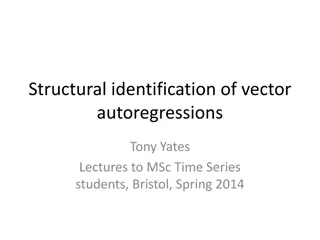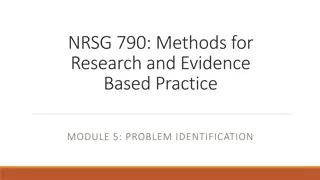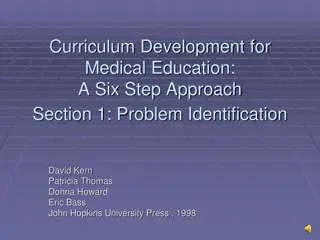Research Stages and Computing Approaches for Problem Identification and Solution
Explore the stages of research from problem identification to hypothesis formulation, analysis, and conclusion. Learn about computing approaches in basic and alternative phases, selecting theories/models, understanding state-of-the-art trends, and implementing solutions effectively. Understand the significance of "The State of the Art" in assessing development and innovation in various fields.
Download Presentation

Please find below an Image/Link to download the presentation.
The content on the website is provided AS IS for your information and personal use only. It may not be sold, licensed, or shared on other websites without obtaining consent from the author.If you encounter any issues during the download, it is possible that the publisher has removed the file from their server.
You are allowed to download the files provided on this website for personal or commercial use, subject to the condition that they are used lawfully. All files are the property of their respective owners.
The content on the website is provided AS IS for your information and personal use only. It may not be sold, licensed, or shared on other websites without obtaining consent from the author.
E N D
Presentation Transcript
RESEARCH STAGE RESEARCH STAGE
STAGE BASIC RESEARCH STAGE BASIC RESEARCH Problem Identification 1. 2. Formulate of Hypothesis 3. Examine of Hypothesis and Analysis 4. Conclusion
RESEARCH PHASE RESEARCH PHASE vs vs FINAL FINAL PROJECT PROJECT FINAL PROJECT RESEARCH PHASE 1. INTRODUCING : - Background - Formulation of Problem - Research Goal - Benefits of Research Problem Identification Hypothesis Formulate 2. BASIC THEORY: - Related Research - Literature Review - Framework Hypothesis Examine and Result Analysis 3.RESEARCH METHODOLOGY: - Research Method - Methods of Data Collection - Methods of Data Analysis - Measurement Research Method Conclusion 4.RESULTS ANALYSIS & DISCUSSION 5. CONCLUSION & SUGGESTIONS
COMPUTING RESEARCH STAGE COMPUTING RESEARCH STAGE 1. Basic Stage 2. Alternative Stage
BASIC STAGE BASIC STAGE Find the PROBLEM ! (Related with reference) 1. 2. Understand and Select computing approach (theory/model/concept) that can be used to solve the problem 3. Implementcomputing approach to the problem that we choose in step 1 4. Measuring its effectiveness (cheaper, more, faster, more appropriate)
ALTERNATIVE PHASES ALTERNATIVE PHASES Select computing approach (theory/model/concept) thatwe like and may be under our control (resource: books) 2. Understand state-of-the-art (research trends) and research challenges of the themeapproach, computing the (resource: journal) 3. Choose a research problem base on state-of-the-art and research challenges 4. Implementcomputing approach to the problem we choose 5. Measuring its effectiveness ! 1.
The State of the Art The State of the Art The highest level of development, as of a device, technique, or scientific field, achieved at a particular time The level of development (as of a device, procedure, process, technique, or science) reached at any particular time usually as a result of modern methods (Merriam Webster Dictionary) a concept used in the process of assessing and asserting novelty and inventive step (European Patent Convention (EPC)) 7
The State of the Art The State of the Art This machine is an example of state-of- the-art technology The state of the art in this field is mostly related to the ABC technology 8
Greenfield, 1996 Greenfield, 1996 1. Review the field i.e., perform a literature survey 2. Build a theory based on your understanding and interpretations of the field 3. Test the theory does it work? 4. Reflect and integrate i.e., update your ideas based on your tests and contribute your newfound knowledge to others. 9
NOT A RESEARCH! NOT A RESEARCH! Design Buildings or Machine Design System Development of System without preceded Problems Identified Plan of Business Strategic (Ronny Kontour, 2008) 10





